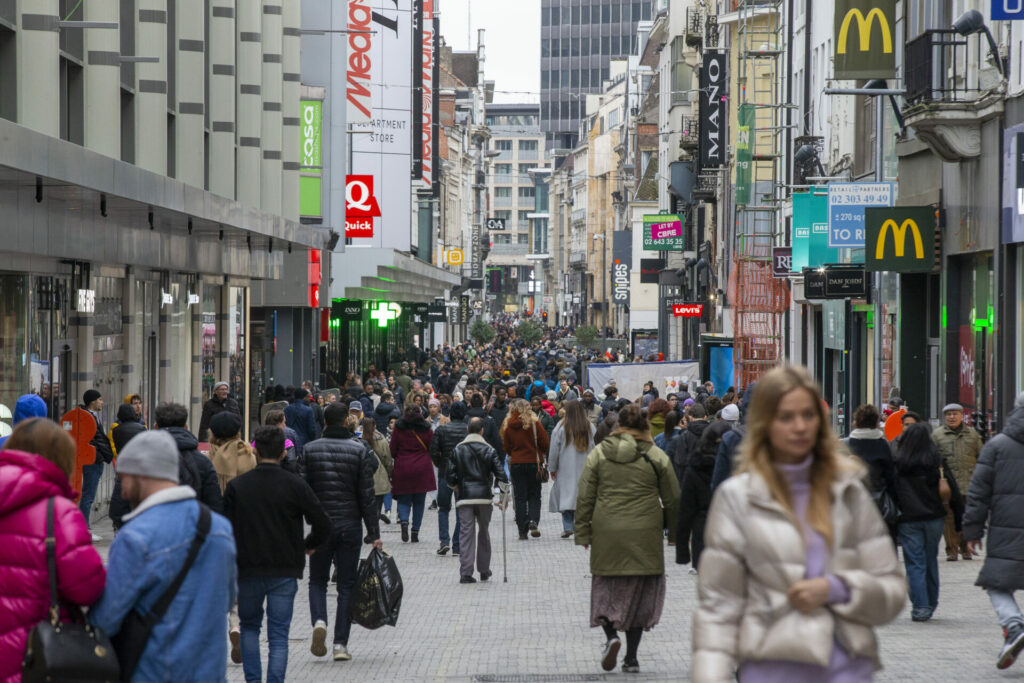Almost nowhere else in the eurozone did life become more expensive than in Belgium, figures from the European statistics service Eurostat showed. In the short term it's a stark jump, but over a longer period Belgium stands out less.
While the European inflation rate dropped to 2.6% in February 2024, Belgium's annual headline rate as measured by the Harmonised Index of Consumer Prices (HICP) – the EU's preferred inflation index – stood at 3.61%. This means that the cost of living (harmonised consumption prices) borne by an average Belgian household was 3.61% higher than in the same month a year earlier. This puts Belgium in the unenviable European leading group.
"This figure is higher than the annual inflation rate of most other countries of the euro area," Eric Dor, the Director of Economic Studies at the IESEG School of Management, told The Brussels Times. Only in Croatia, Estonia, Slovakia and Austria did the cost of living rise more sharply year-on-year.
"This could seem surprising since the annual inflation rate of Belgium in January 2024 was only 1.47%, which was relatively small compared to most other countries of the euro area." In January, the eurozone average was still 2.8%.

The graph shows Belgium's HICP is much higher than in other European countries. Credit: IESEG
Dor explains that the more recent jump in inflation is due to "base effects", which refer to the difference between the annual inflation rates of January 2024 and February 2024. "This is mechanically influenced by the difference between the starting points of prices, thus between the price index of January 2023 and the price index of February 2023," Dor noted. It also depends on the difference between the "arrival points of prices", thus the difference between the price index of January 2024 and the price index of February 2024.
"The price index had only increased by 0.26% between January and February 2023, but rose by 2.38% between January and February 2024." The starting points (January and February 2023) only went up slightly but the arrival point increased much more dramatically. This means that the spread between the starting point and the arrival point – the annual inflation rate – rose significantly.
Monthly surge
The monthly inflation rate of February 2024 – the rate of increase in harmonised consumption price index prices since the previous month – was higher for Belgium than for all other countries of the eurozone. The index surged 2.38% in Belgium between January and February 2024, well ahead of second-place Luxembourg (1.66%).
"The main reason is the sharp increase of energy prices in Belgium by 11% between January and February 2024," Dor states.
The price of gas increased by 31% in one month while electricity prices have also gone up 7.7% between January 2024 and February 2024. "This surge results from the progressive removal of the basic package for electricity and natural gas." This also impacted the Statbel inflation figure in February. Prices of food, tobacco and restaurant visits also contributed to the increased inflation.
Other economists argue this is the "second-round effect" in the aftermath of the energy crisis and the subsequent inflation crisis. In other countries wages have adjusted more recently than in Belgium, which can now be reflected in the (foreign) products people in Belgium buy.
Related News
- Biggest Belgian festivals became 67% more expensive in ten years, but still sell out
- Generating extra wealth: 73 Belgian families have combined savings of €23 billion
- Cheaper over the border? Slump in Belgian spending raises questions
Dor stresses that there is much volatility in the trajectory of annual or monthly inflation in the different countries, making it difficult to draw too general conclusions based on month-by-month rises. "It's more useful to compare the overall increase in prices in the different eurozone countries, from the start of the inflationary crisis in January 2021 until now."
In Belgium, consumption prices have increased by 21% over this period. Across the eurozone countries, this places Belgium in the middle. However, the rate is much higher than in neighbouring France, where an increase of 15.39% was recorded. In Germany core prices have gone up 19.1% and in the Netherlands 21.39%.
However, the trajectory of the price index during the inflationary period is comparable among all neighbouring countries, and Belgium's evolution does not stand out dramatically.


